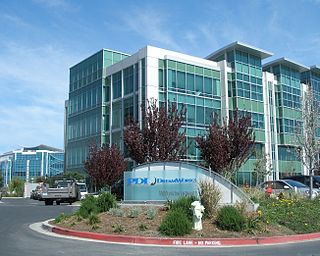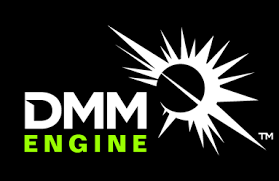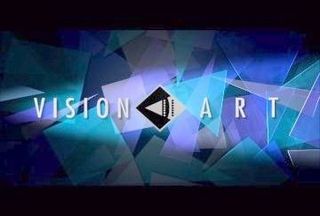Wētā FX, formerly known as Weta Digital, is a New Zealand–based digital visual effects and animation company based in Miramar, Wellington. It was founded by Peter Jackson, Richard Taylor, and Jamie Selkirk in 1993 to produce the digital special effects for Heavenly Creatures. The company went on to produce some of the highest-grossing films ever made, such as the Lord of the Rings trilogy and the Avatar series. Considered one of the most influential film companies of the 21st century, Wētā FX has won several Academy Awards and BAFTAs. The company is named after the New Zealand wētā, one of the world's largest insects, which was historically featured in the company logo.
Visual effects is the process by which imagery is created or manipulated outside the context of a live-action shot in filmmaking and video production. The integration of live-action footage and other live-action footage or CGI elements to create realistic imagery is called VFX.

Houdini is a 3D animation software application developed by Toronto-based SideFX, who adapted it from the PRISMS suite of procedural generation software tools.
Pixar RenderMan is a photorealistic 3D rendering software produced by Pixar Animation Studios. Pixar uses RenderMan to render their in-house 3D animated movie productions and it is also available as a commercial product licensed to third parties. In 2015, a free non-commercial version of RenderMan became available.

Dennis Muren, A.S.C is an American film visual effects artist and supervisor. He has worked on the films of George Lucas, Steven Spielberg, and James Cameron, among others, and has won nine Oscars in total: eight for Best Visual Effects and a Technical Achievement Academy Award. The Visual Effects Society has called him "a perpetual student, teacher, innovator, and mentor."

Pacific Data Images (PDI) was an American computer animation and visual effects production company based in Redwood City, California, that was bought by DreamWorks SKG in 2000. It was renamed PDI/DreamWorks and was owned by DreamWorks Animation.

Virtual cinematography is the set of cinematographic techniques performed in a computer graphics environment. It includes a wide variety of subjects like photographing real objects, often with stereo or multi-camera setup, for the purpose of recreating them as three-dimensional objects and algorithms for the automated creation of real and simulated camera angles. Virtual cinematography can be used to shoot scenes from otherwise impossible camera angles, create the photography of animated films, and manipulate the appearance of computer-generated effects.
Previsualization is the visualizing of scenes or sequences in a movie before filming. It is a concept used in other creative arts, including animation, performing arts, video game design, and still photography. Previsualization typically describes techniques like storyboarding, which uses hand-drawn or digitally-assisted sketches to plan or conceptualize movie scenes.
John Andrew Berton Jr. is an American computer graphics animator and visual effects supervisor. His most recent completed project is Bedtime Stories. He also worked in India, supervising effects on the film Krrish 3. In the fall of 2013, he joined the faculty of Drexel University in Philadelphia.
Marc Weigert is an Emmy-award-winning film producer and film/TV visual effects supervisor and 2nd unit director.

Michael Arias is an American-born filmmaker active primarily in Japan. Though Arias has worked variously as visual effects artist, animation software developer, and producer, he is best known for his directorial debut, the anime feature Tekkonkinkreet, which established him as the first non-Japanese director of a major anime film.

Digital Molecular Matter (DMM) is a proprietary middleware physics engine developed by Pixelux for generating realistic destruction and deformation effects. The offline version can support high-resolution simulations for use in film special effects. The real-time version is designed for video games, and other simulation needs by attempting to simulate physical real-world systems. Unlike traditional real-time simulation engines, which tend to be based on rigid body kinematics, the use of finite element analysis (FEA) allows DMM to simulate a large set of physical properties. Developers can assign physical properties to a given object or portion of an object, which allow the object to behave as it would in the real world. In addition, the properties of objects or parts of objects can be changed at runtime, allowing for additional interesting effects.

VisionArt Design & Animation was a motion picture and television visual effects company, founded in the 1980s by David Rose and Todd Hess. Though originally a small Orange County company working primarily on cable TV advertisements and flying logos, VisionArt moved to Santa Monica in 1992, winning its first major effects work with Star Trek: Deep Space Nine. The studio originated in Santa Ana, California, later moved to Santa Monica, California, and closed its doors in 2000.
A graphics coordinator (GC) or font assist is an individual who works, usually on a television show, as a producer of on-air still and motion graphics. The graphics coordinator decides what content should be displayed on-air — such as on a fullpage or a lower third. The GC should not be confused with the Operator, who usually operates a character generator (CG) and is part of a television crew, or a broadcast designer who physically creates the graphics.

Craig Barron is an American visual effects artist and creative director at Magnopus, a media company that produces visual development and virtual production services for motion pictures, television, museums and multimedia platforms.
Matte World Digital was a visual effects company based in Novato, California that specialized in realistic matte painting effects and digital environments for feature films, television, electronic games and IMAX large-format productions. The company closed in 2012 after 24 years of service in the entertainment industry.
The VFX creative director is a position common in films, television programs, and computer games using a large amount of visual effects (VFX).

Method Studios is a visual effects company launched in 1999 in Los Angeles, California with facilities in New York, Atlanta, Vancouver, San Francisco, Melbourne, Montreal, and Pune. The company provides production and post-production services including conceptual design, look development, on-set supervision, 3D animation/CGI, matte painting, AR/VR, compositing and finishing.
Dan Lemmon is a New Zealand visual effects supervisor. In 2012, he was nominated for an Academy Award for the movie Rise of the Planet of the Apes. This was in the category of Academy Award for Best Visual Effects, his nomination was shared with Daniel Barrett, Joe Letteri and R. Christopher White.

Allan McKay is a Los-Angeles based visual effects supervisor and technical director. He is responsible for visual effects sequences in projects including Transformers: Dark of the Moon, Blade, The Last Airbender, Star Trek: Into Darkness, Flight, The Equalizer, and other films. He has also worked on several video games including Halo, Destiny, Call of Duty, Bioshock, Prototype, Half-Life, Team Fortress 2, and others.









